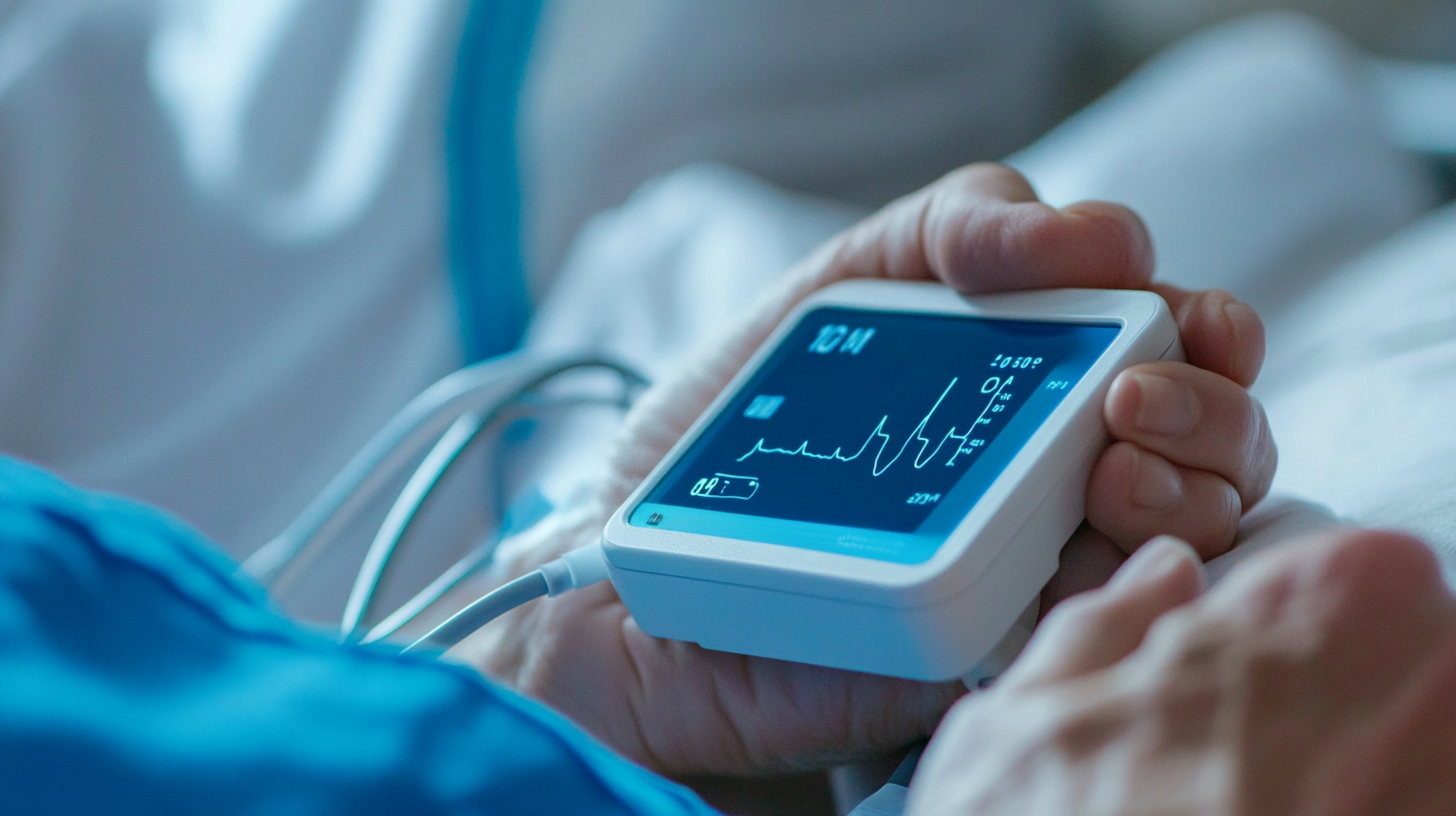How to Choose the Best Pulse Oximeter for Your Needs in Australia
In recent years, the pulse oximeter has become an essential tool for monitoring oxygen levels, particularly amid the heightened awareness of health and respiratory issues. As we look ahead to 2025, advancements in technology are set to transform the capabilities and accessibility of pulse oximeters in Australia. This blog aims to guide you through the process of selecting the best pulse oximeter to meet your specific needs, exploring key features, accuracy, and user-friendliness. Whether you're a healthcare professional, a fitness enthusiast, or someone managing a chronic condition, finding the right pulse oximeter Australia is critical. By understanding the latest trends and innovations in this field, you can make an informed decision that contributes to better health outcomes for yourself or your patients.

Factors to Consider When Selecting a Pulse Oximeter for Personal Use
When selecting a pulse oximeter for personal use in Australia, several key factors should be taken into account to ensure you choose the best device for your needs. Firstly, consider the device's accuracy and reliability. Look for models that are clinically validated, as these will provide more precise readings. Reading user reviews and checking for any certifications can give you confidence in the device's performance.

Another important tip is to assess the features you require. Some pulse oximeters come with additional functions, such as Bluetooth connectivity or the ability to track data over time. If you are someone who values technology and wants to monitor your health regularly, a model with advanced features may be beneficial. On the other hand, a simpler device may suffice if you only need basic readings.
Lastly, pay attention to the design and usability of the pulse oximeter. Ergonomics play a significant role, especially for individuals with limited dexterity. Look for a model that is user-friendly, with a clear display and easy button functions. Choosing a lightweight and portable option ensures you can carry it with you for checks on the go, making it a practical addition to your health management tools.
Types of Pulse Oximeters Available in Australia and Their Applications
When selecting a pulse oximeter in Australia, it's essential to understand the various types available and their specific applications. Pulse oximeters typically fall into several categories: handheld devices, fingertip oximeters, wrist-worn models, and bedside monitors. Handheld devices are often used in clinical settings for quick and accurate readings, while fingertip models are popular for personal use due to their portability and ease of use. According to a recent market report by Research and Markets, the handheld pulse oximeter segment is expected to witness significant growth, projected to reach AUD 1.2 billion by 2025, driven by increasing home healthcare applications.
Wrist-worn oximeters are gaining traction among athletes and fitness enthusiasts who monitor their oxygen saturation levels during workouts. These devices often include additional functions, such as heart rate monitoring and activity tracking, appealing to health-conscious consumers. Meanwhile, bedside monitors are commonly employed in hospitals for continuous monitoring of patients. With the demand for accurate monitoring solutions on the rise, it’s important to choose a pulse oximeter tailored to your specific health needs, whether for everyday use, sports, or medical environments. The type you select can significantly impact the effectiveness of your health monitoring endeavors.
Key Features to Look for in a Quality Pulse Oximeter
When selecting the best pulse oximeter for your needs in Australia, understanding the key features is vital to ensuring accurate readings and optimal performance. First and foremost, look for a device that offers precise oxygen saturation (SpO2) readings and pulse rate functionality. Accuracy is paramount, especially if you're using the oximeter for monitoring health conditions or after sports activities.
Another essential feature is display quality. A larger, easy-to-read screen is beneficial, particularly for older users or those with visual impairments. Some models offer adjustable brightness or even a rotating display, which can greatly enhance usability. When considering portability, opt for a lightweight design that can easily fit in your pocket or bag for on-the-go readings.
**Tips:** Always check user reviews and verify the device's accuracy with clinical validation studies. Additionally, consider whether the pulse oximeter provides alarms or alerts for abnormal readings, which can be crucial for timely interventions. Finally, battery life is important; a longer-lasting battery means less frequent replacements, making your monitoring experience more convenient.
How to Choose the Best Pulse Oximeter for Your Needs in Australia - Key Features to Look for in a Quality Pulse Oximeter
| Feature | Description | Importance |
|---|---|---|
| Accuracy | Should provide accurate SpO2 readings within ±2%. | High - essential for health monitoring. |
| Display Readability | OLED or LCD display with clear, easy-to-read digits. | Medium - affects usability. |
| Portability | Compact and lightweight for ease of transport. | High - convenient for travel and home use. |
| Battery Life | Long-lasting battery, ideally rechargeable. | High - reduces maintenance and operational costs. |
| Ease of Use | Simple interface and one-button operation. | Medium - important for elderly or non-tech users. |
| Data Storage | Ability to store historical data for tracking health trends. | Medium - useful for continuous health monitoring. |
| Warranty | At least one-year warranty for peace of mind. | High - indicates product reliability. |
How to Compare Prices and Brands of Pulse Oximeters Effectively
When selecting a pulse oximeter in Australia, comparing prices and brands is essential for ensuring you get the best value for your investment. According to a recent market analysis by Grand View Research, the global pulse oximeter market is projected to reach USD 2.5 billion by 2027, indicating a surge in demand due to increasing awareness of health monitoring. With numerous brands available, it’s crucial to evaluate both price and features to find the right device that suits your specific needs.

When comparing prices, take into account the features that are important to you, such as accuracy, display type, and battery life. Many reputable brands, including Nonin and Masimo, offer different models ranging in price from AUD 30 to AUD 200. The choice between a budget-friendly option and a higher-end model often comes down to the intended use – for instance, occasional home monitoring versus professional healthcare settings.
According to a report by MarketWatch, high-end devices tend to provide advanced features like Bluetooth connectivity and additional health metrics, justifying their higher price tags. Thus, understanding your requirements can significantly aid in making an informed decision while ensuring you invest wisely in your health.
User Reviews and Recommendations: What to Trust When Choosing a Pulse Oximeter
When selecting a pulse oximeter, user reviews can provide valuable insights that help you make an informed decision. Look for products with high ratings and detailed feedback on their accuracy and ease of use. Users often share their personal experiences, which can illuminate potential issues or benefits that might not be apparent in promotional materials. Pay attention to comments about how reliable the device is in various conditions, such as during exercise or when in different levels of skin pigmentation.
Another key aspect to consider in user recommendations is customer service and warranty details. Many buyers share their experiences regarding the reliability of the manufacturer's support in case of malfunctions. A device backed by a professional team offering prompt assistance can be just as important as the device's performance. Be on the lookout for brands that not only provide satisfactory products but also maintain a solid reputation for after-sales support. This will ensure you can rely on your pulse oximeter for years to come, achieving peace of mind along with accurate health readings.

